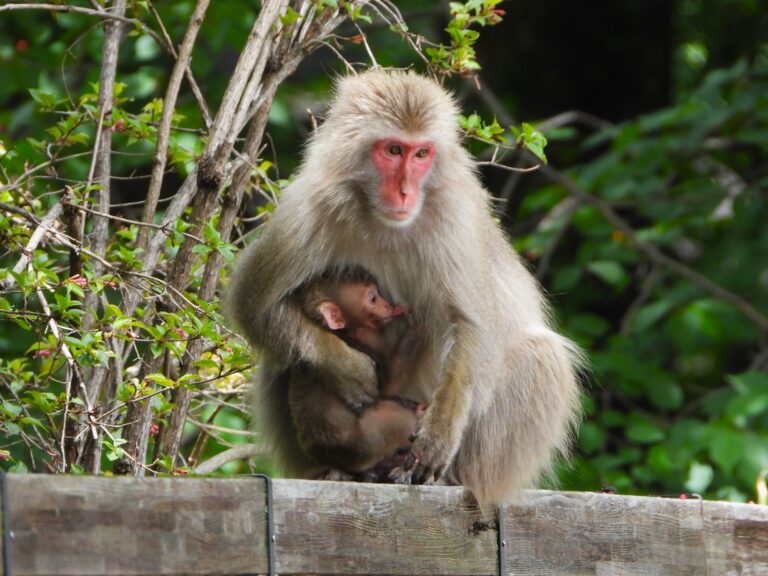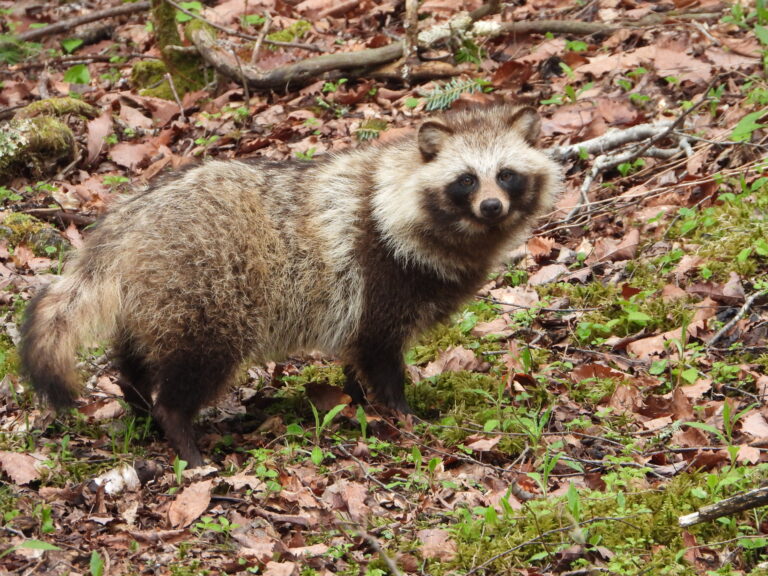Wildlife in Hokkaido – See Japan’s Most Incredible Animals in Their Natural Habitat
Introduction
From dancing cranes on frozen marshes to sea otters gliding through drift ice, Hokkaido is Japan’s last great frontier for wildlife.
Nowhere else in the country offers such diversity. Foxes, owls, eagles, deer—and even the snow fairy—endure the long northern winter.
This guide introduces where and when to see Hokkaido’s most iconic animals in the wild and how to enjoy Japan’s natural heritage responsibly.
Red-crowned Crane in Hokkaido – The Dancing Spirit of the Marshes

The red-crowned crane (Grus japonensis) is Hokkaido’s most celebrated bird. On snowy marshes, its graceful dance—leaps, bows, and calls—turns the frozen landscape into a living performance. Once close to extinction, local conservation efforts have helped its population recover.
Where to See: Kushiro Marsh, Tsurui Village, Akan
Best Time: December–March
Photo Tip: Visit at dawn when the mist lingers over the marsh and golden light fills the sky.
→ Read the full species profile
Steller’s & White-tailed Eagles – Monarchs of the Frozen Sea
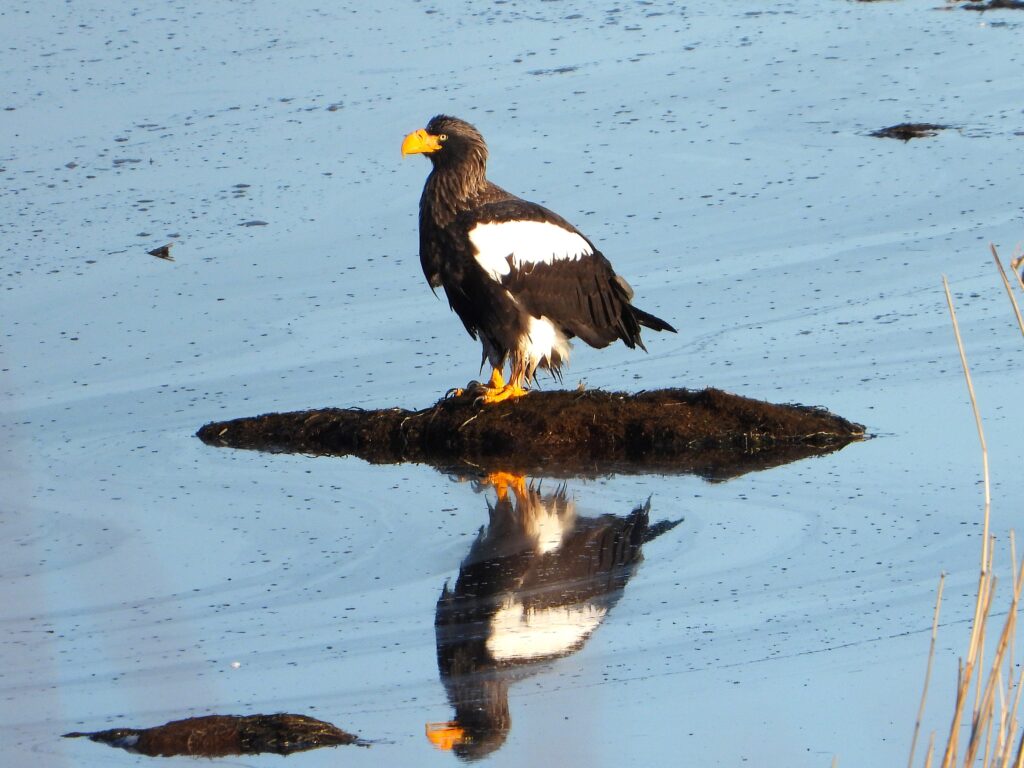
Two of the world’s most powerful raptors share Hokkaido’s winter sky. The Steller’s sea eagle (Haliaeetus pelagicus) spreads wings over two meters wide, its bright yellow beak glowing in the cold air. The white-tailed eagle (Haliaeetus albicilla) is slightly smaller but breeds year-round in eastern Hokkaido. Together, they patrol the drift ice near Rausu and Shiretoko, diving for fish across a shimmering frozen sea.
Where to See: Rausu, Shiretoko Peninsula, Nemuro
Best Time: January–March
Photo Tip: Take an early morning drift-ice cruise to catch both species in soft light.
→ Read the full species profile
Blakiston’s Fish Owl – The Silent Guardian of the Forest
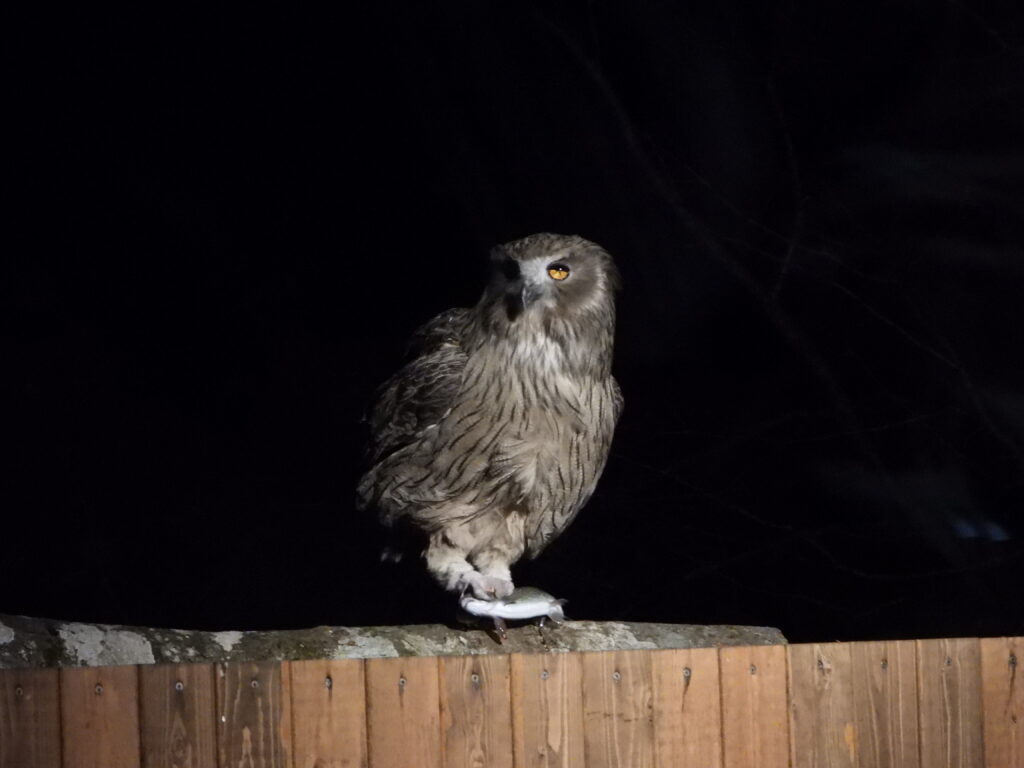
The Blakiston’s fish owl (Ketupa blakistoni) is among the largest and rarest owls in the world. It lives only in the remote river valleys of eastern Hokkaido, hunting silently at night along icy streams. Fewer than 200 individuals remain in Japan, but conservation lodges and guided tours now help protect their nesting sites.
Where to See: Shiretoko, Nemuro, Kushiro region
Best Time: Winter–early spring
Photo Tip: Observe quietly with a licensed guide, and avoid flash or bright lights.
→ Read the full species profile
Ezo Red Fox – The Face of the Northern Wilderness

The Ezo red fox (Vulpes vulpes schrencki) is one of Hokkaido’s most familiar mammals. Larger than its mainland cousins, this fox roams freely across forests and meadows. You might spot one near a road or village. However, feeding them is strictly prohibited—it endangers both animals and people.
Where to See: Furano, Biei, Akan, Tokachi
Best Time: All year
Photo Tip: Watch quietly from a distance at dusk and use a long lens for natural portraits.
→ Read the full species profile
Ezo Deer – Graceful Wanderers of the Forest
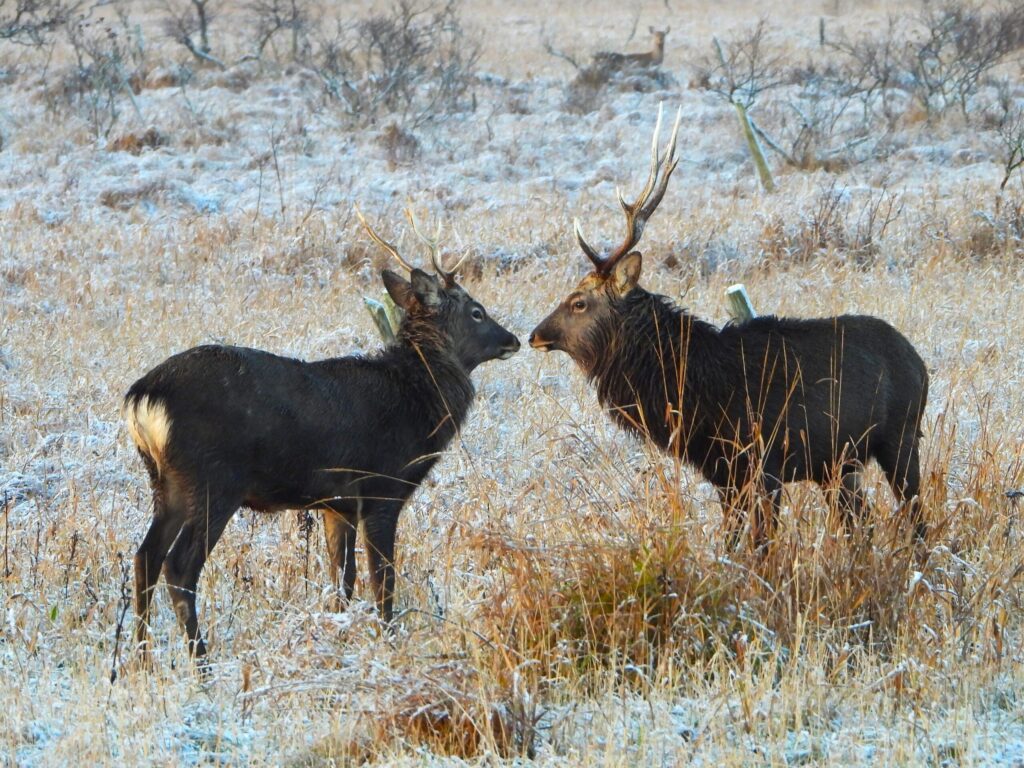
The Ezo deer (Cervus nippon yesoensis) roams through forests and grasslands across Hokkaido. It has some of the largest antlers among sika deer. In autumn, males clash in fierce battles that echo through misty valleys—one of the most haunting sounds of the northern wild.
Where to See: Shiretoko, Akan, Tokachi
Best Time: Autumn
Photo Tip: Use early morning light to capture silhouettes against the fog.
→ Read the full species profile
Ezo Red Squirrel – The Forest’s Little Acrobat
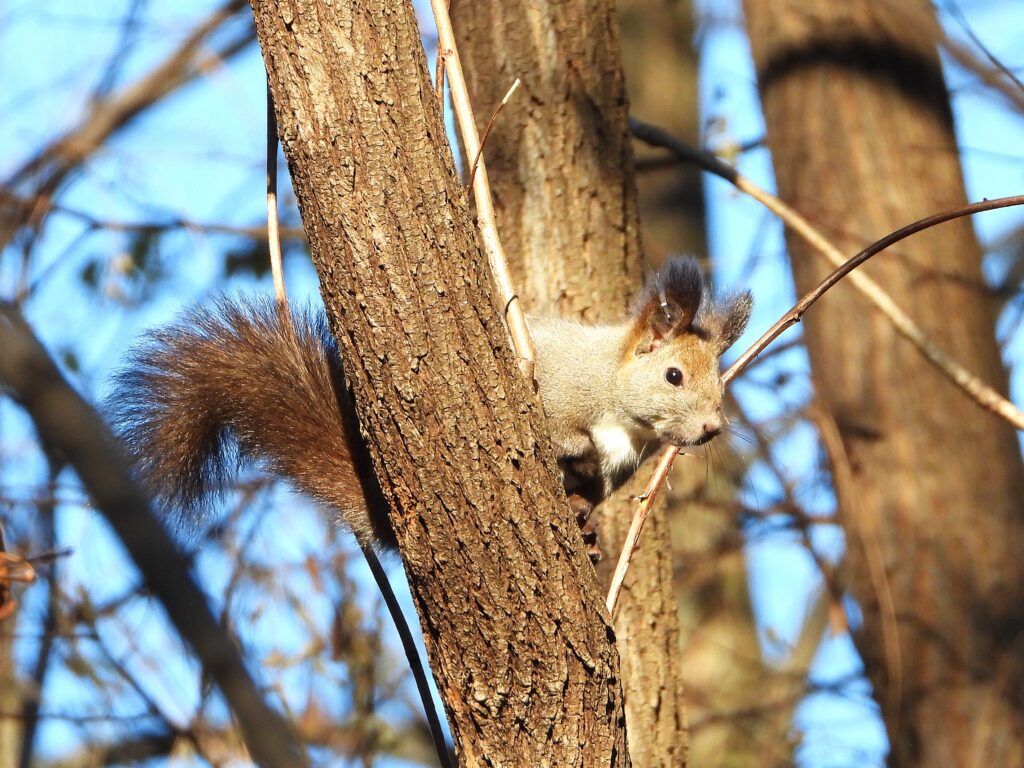
The Ezo red squirrel (Sciurus vulgaris orientis) remains active even in midwinter. It leaps between snow-covered branches in search of seeds and pine cones. Its tufted ears and quick movements make it one of Hokkaido’s most charming residents.
Where to See: Sapporo, Asahikawa, Biei
Best Time: Winter–Spring
Photo Tip: Wait quietly along forest trails and watch for them with patience.
→ Read the full species profile
Ezo Pika – The Voice of the Northern Mountains

The Ezo pika (Ochotona hyperborea yesoensis) is one of Hokkaido’s most iconic mountain animals. Living among rocky slopes at high altitudes, it spends its days gathering grasses and calling in sharp, high-pitched notes that echo through the alpine air.
Unlike many small mammals, pikas do not hibernate. Instead, they build hidden “hay piles” to survive the long northern winter.
Spotting one is rare, but hearing their delicate whistles at sunrise feels like listening to the true heartbeat of Hokkaido’s mountains.
Where to See: Daisetsuzan National Park, Tokachi-dake, Shiretoko Mountains
Best Time: Summer–Autumn
Photo Tip: Sit quietly near rocky slopes in the early morning. Listen for their “peep” calls and watch carefully between the stones.
→ Read the full species profile
Long-tailed Tit – The Snow Fairy of the North
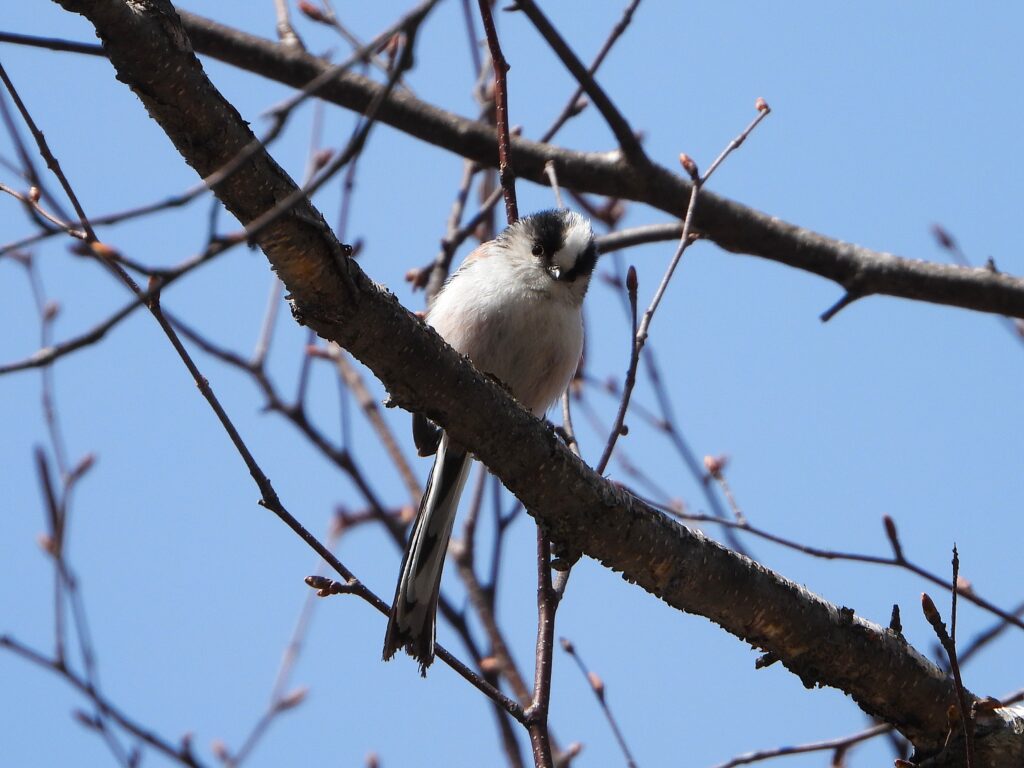
The long-tailed tit (Aegithalos caudatus) is often called the “Snow Fairy” of Hokkaido. Its round, white body and gentle movements brighten the winter forest. Small flocks flutter through birch trees like drifting snowflakes.
Where to See: Sapporo, Asahikawa, Biei
Best Time: Winter
Photo Tip: Stay still in birch or alder woods and listen for faint, high calls overhead.
Note: This photo shows a Long-tailed Tit from Japan’s main islands. The Hokkaido subspecies, known as Shima Enaga, is even whiter and more elusive. I’ll replace the image when I manage to photograph it.
→ Read the full species profile
Sea Otter – The Ocean’s Playful Guardian

Once thought extinct in Japan, the sea otter (Enhydra lutris) has slowly returned to the northeastern shores of Hokkaido. It floats on its back, cracks shells with stones, and drifts gently in the waves. This playful creature perfectly embodies the spirit of the northern sea.
Where to See: Rausu coast, Nemuro region
Best Time: Spring–Summer
Photo Tip: Observe from a boat or coastal lookout, keeping a respectful distance.
→ Read the full species profile
Conservation & Responsible Wildlife Watching
Hokkaido’s wildlife survives because people choose to respect it.
- Never feed wild animals.
- Keep your distance and avoid bright lights or loud sounds.
- Join licensed eco-tours or local guides for ethical observation.
- Support community-led conservation efforts.
According to the Hokkaido Institute of Environmental Sciences, habitat restoration has helped stabilize fish owl populations—proof that protection works when everyone takes part.
Author’s Impression
Hokkaido is a true treasure house of Japan’s wildlife—home to species that define the country’s natural beauty. I hope every visitor takes time to explore its vast landscapes while quietly observing animals in their true habitats.
But I have one personal request: please never feed wild animals or break local rules. Respecting nature is the best way to experience the real Hokkaido—and the heart of what makes Japan’s wilderness so special.




